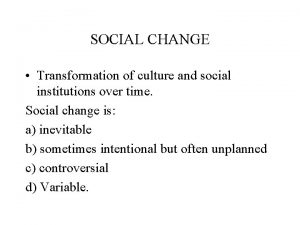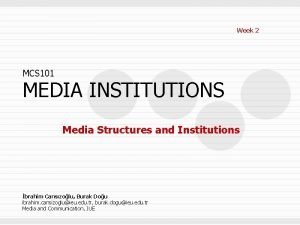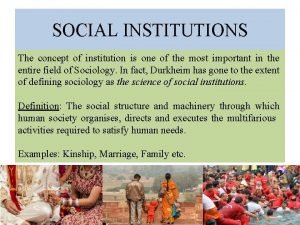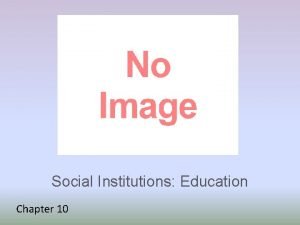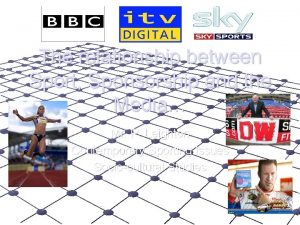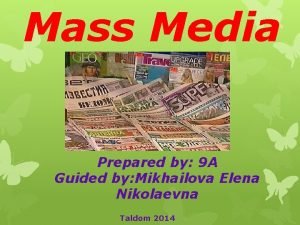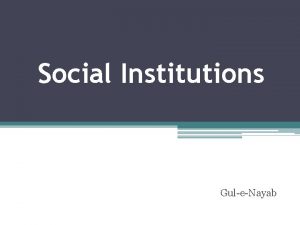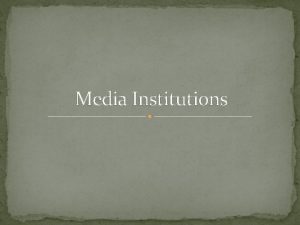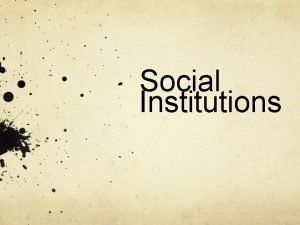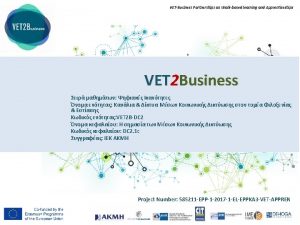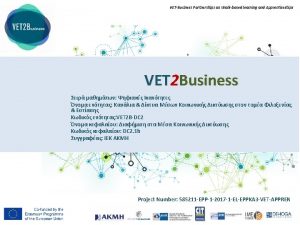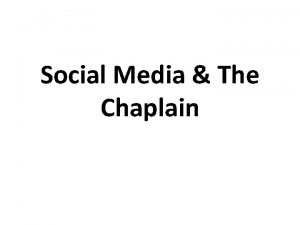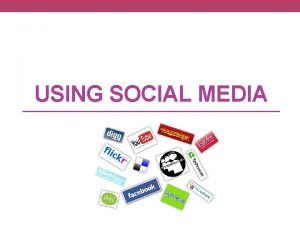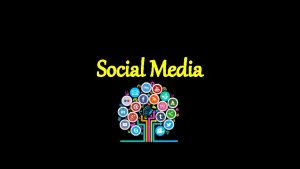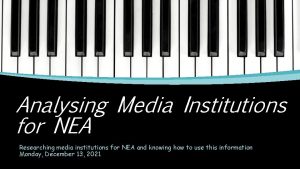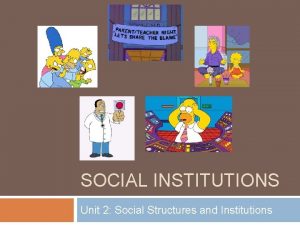SPORTS AND MEDIA SOCIAL INSTITUTIONS SPORTS Sport competitive
















- Slides: 16

SPORTS AND MEDIA SOCIAL INSTITUTIONS

SPORTS Sport – competitive games that are won or lost on the basis of physical skills and played according to specific rules Direct Competition – 2 individuals or teams engage each other physically Indirect Competition – participants take turns at the same skill Against a Standard – Individuals or teams may compete indirectly, but their performances are measured against a preset standard

COMPETITION

SECULARIZATION Rules for sport to be considered an institution: Roles Norms Values Distinguished from other institutions Removed from the realm of the sacred to that of the profane

Equality: competition is open to everyone and same rules apply to all contestants Specialization: athletes are able to specialize within the sport (runners, catchers, jumpers, scorers, etc) Rationalization: the processes by which every feature o human behavior becomes subject to calculation, measurement, and control Bureaucratization: a formal organization is charged with developing and enforcing rules and settling disputes Quantification: a focus on specific achievement within the sport; setting records

FUNCTIONALIST PERSPECTIVE By providing a common interest, sport helps to unite members of the community. Sport reinforces important norms and values, such as hard work, competition, and patriotism. Sport offers a socially acceptable means of getting rid of tension and aggression.

CONFLICT PERSPECTIVE Sport perpetuates the power structure by distracting people from working for social change. Sport tends to reinforce gender and racial inequality.

INTERACTIONIST PERSPECTIVE The symbols, norms, and values of sport influence everyday social behavior. Adopting athletes as role models and influence behavior.

ISSUES IN SPORT Stacking – the practice of assigning people to central or noncentral athletic position on the basis of race or ethnicity. Title IX – Education Amendment Act of 1972, bars discrimination on the basis of gender in any program, including athletics, at any educational institution receiving federal funds

MEDIA Information Society – a community in which the exchange of information is the main social and economic activity

FUNCTIONALIST PERSPECTIVE Mass media (books, video, television, internet, etc) support social stability by keeping track of what is happening in the world, interpreting information, transmitting cultural values, and providing entertainment

CONFLICT PERSPECTIVE Mass media maintain present power structure and reinforce social inequalities by controlling the flow and interpretation of information. Knowledge-Gap Hypothesis – as new information enters society, wealthy and better-educated members acquire it at a faster rate than the poor or less educated. This gap develops even if access is equal. Digital Divide – the gap between those with access to new technologies and those without

INTERACTIONIST PERSPECTIVE Mass media have a major impact on social interaction. The mass media create social isolation No real interaction. Reliance on new forms of interaction. The echo chamber. Mass media helps to create new social networks Access to information we’d never have. Discovery of diverse views and people we’d never interact with otherwise.

ISSUES IN MEDIA Social capital – everything that make up a community. Civic, social, and religious organizations to which people belong to the friendship networks people develop through neighborhoods, schools, and sports teams. A disconnect with civic and social life.

Spiral of Silence – a belief that as more people accept common opinions that people who disagree are less likely to voice their views. Gatekeepers – media executive, editors, or reporters who can open or close the “gate” on a particular news story.

Opinion Leaders – respected individual in the community. People who are trusted to inform members of the community who then pass it on to friends and acquaintances. Who can report the news?
 Pharmacology introduction
Pharmacology introduction Rivalry chapter 5
Rivalry chapter 5 Which market is the least competitive
Which market is the least competitive Transformation of culture and social institutions over time
Transformation of culture and social institutions over time Sports include all forms of competitive activity or games
Sports include all forms of competitive activity or games Media institutions definition
Media institutions definition Media institution
Media institution Characteristics of social institutions
Characteristics of social institutions Family as social institution
Family as social institution Social institutions education
Social institutions education It refers to highly exposed and actively used media.
It refers to highly exposed and actively used media. Relationship between sport media and sponsorship
Relationship between sport media and sponsorship Sport and the mass media guided reading
Sport and the mass media guided reading Outdoor indoor sports
Outdoor indoor sports Social thinking and social influence
Social thinking and social influence Social thinking social influence social relations
Social thinking social influence social relations Diritti dei bambini tesina terza media
Diritti dei bambini tesina terza media



